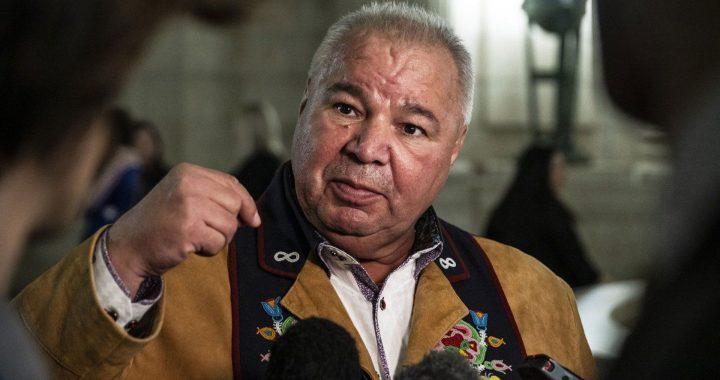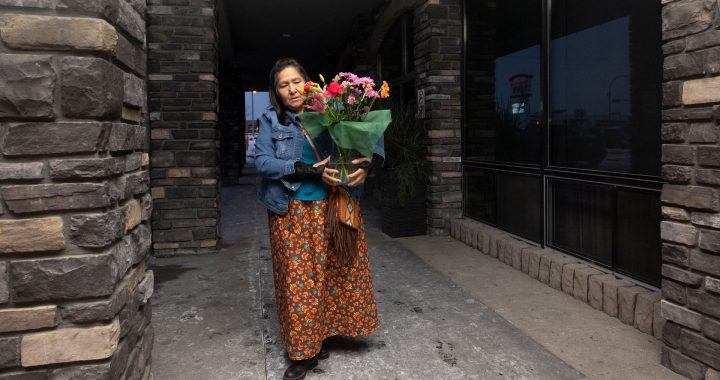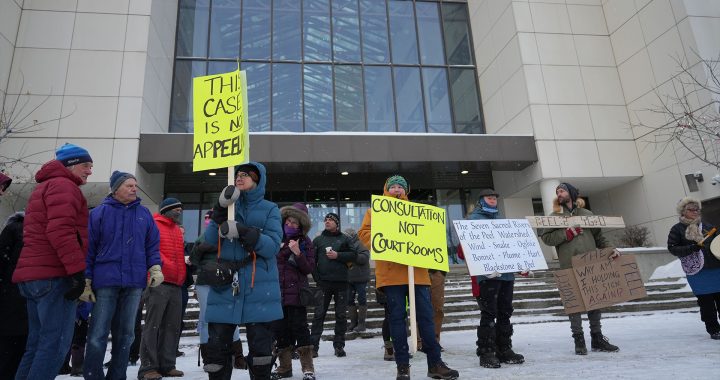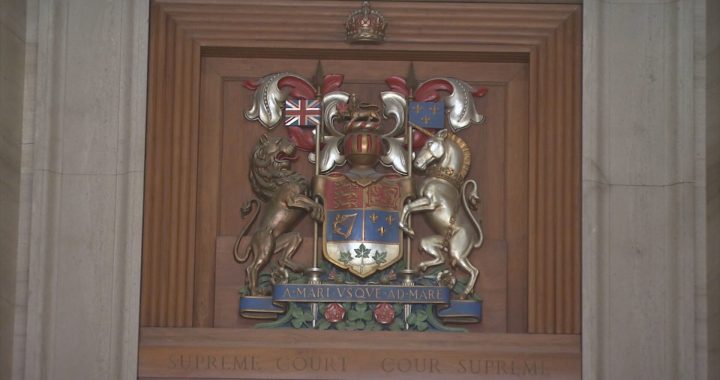A feast recently organized by Métis women living in Montreal set the stage for both celebration of their unique Western culture, as well as conversation about the self-declared groups in the East many say are exploiting it.
Although classified as a post-contact culture, ‘Métis’ is not a piecemeal or fragmented identity term, according to educator and filmmaker Michelle Smith, one of three organizers who put together an expansive cultural showcase held at Dawson College.
“It’s something unto itself; it’s not a mix, not a little of this, a little bit of that — it’s something whole,” Smith explained.
“We grew up knowing full well who is Métis, what is Métis — it’s that sense that we grew up in a specific place,” explained Blake Desjarlais, who hails from Fishing Lake, Alberta. “It’s a land-based identity.”
“It’s about shared ideas, shared principles, shared values, shared ideologies,” he added. “Our culture — it’s a bit of Québécois culture, and a bit of First Nations culture, and we found a way to marry them.”
However, analysis of national housing survey data revealed that Quebec’s Aboriginal Identity population grew by 21 per cent over five years — far outpacing the national average — despite statistics also showing that the province’s birth rate was falling.
Perhaps one explanation is the proliferation of self-declared Eastern Métis groups; in Quebec alone, thousands of people are ‘registered’ to groups representing “Eastern Métis,” “Quebec Métis,” “Acadian-Métis,” or “Acadian-Mi’kmaq.”
Quebec natives surely recognize parallels between contemporary Métis culture and French Canadian culture: their three meat pie and vegetable chutney are called tourtiere and ketchup Madison when served “a la bonne franquette,” the braided sash donned during official Métis events was also worn by French voyageurs.
The mother of Louis Riel — the leader of the historical Metis resistance — is believed to have been born in Quebec.
But that’s where the similarities end, experts say.
“Absolutely Quebecers came to the West, settled in places like Red River, Lac St-Anne, etc.,” explained Adam Gaudry, Assistant Professor at the University of Alberta. “But they married into existing Métis communities, and they became Métis.”
“They didn’t bring that Métis-ness with them,” he added.
Despite some assertions that Quebec is “the cradle of Métis culture,” no court recognizes so-called Métis communities east of Ontario.
However, their existence has proved divisive within national Métis organizations. The Manitoba Métis Federation, for example, threatened to withdraw from the Métis National Council if it continued to accept non-Métis people into their organization, and into the organization’s governing structure.
Most modern claims to Métis identity along the East coast rest on far-flung — and at times, inaccurately documented – “aboriginal” ancestors.
Poring over years of genealogical records, St. Mary’s university researcher Darryl Leroux found that founders and members of some of Quebec’s largest Métis organizations claimed the same female ancestors to prove indigeneity.
So the question remains: why?
In his book “Distorted Descent,” Leroux says that false claims and “aspirational ascent” are used to apply for jobs, scholarships, bursaries, advisory positions, and other opportunities intended for Indigenous people.
Earlier this year, a self-identified Métis group from Quebec had its case thrown out of the Supreme Court after it petitioned for the right to hunt on public land.
A teen in Halifax — a registered member of the Eastern Woodland Métis community — took to social media to brag about winning an Indigenous-specific scholarship despite being “the whitest person ever.” The scholarship was later rescinded after the posts were circulated on social media.
But for those who were born and raised Métis, focusing solely on these cautionary tales of Indigenous identity politics detract from the actual experiences of youth trying to connect with a culture they may have never known.
“A lot of the time the political or official discourse around Métis identity can be very painful for young people who are navigating their own identity or who are going through a process of discovery with who they are,” Smith explained.
“[Identity politcs] are divisive and hurtful in our communities and I find that they really feed into ongoing colonial policies of federal and provincial governments, and I feel like they don’t bring anybody forward,” she said.
“I wouldn’t say that they don’t have the opportunity to be understood. Every person has a opportunity to be understood,” Desjarlais added. “And they have a story — that story is something I’m interested in.”
Focusing on charlatans — many of them male — takes focus away from the positive contributions of Métis women, according to multidisciplinary artist and organizer Moe Clarke.
“I think it’s very important to acknowledge who we are as contemporary people — you know, working and functioning in our everyday lives,” she said.
“I think it’s really important and necessary to bring our voices forward and to make space.”










